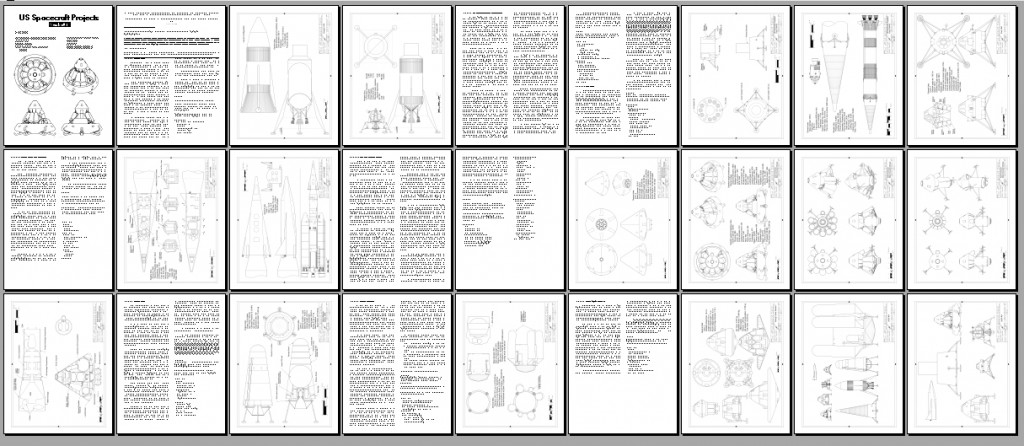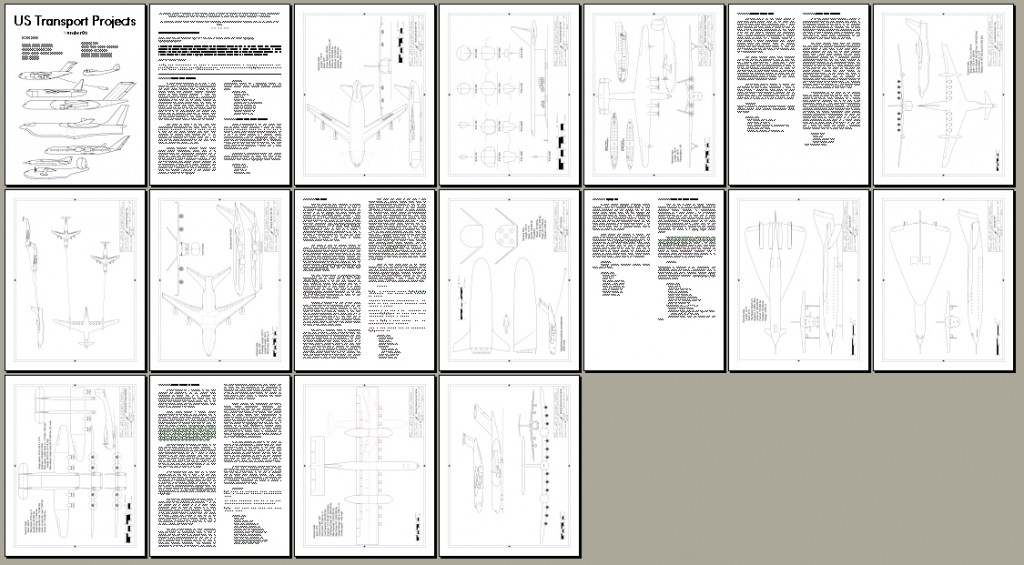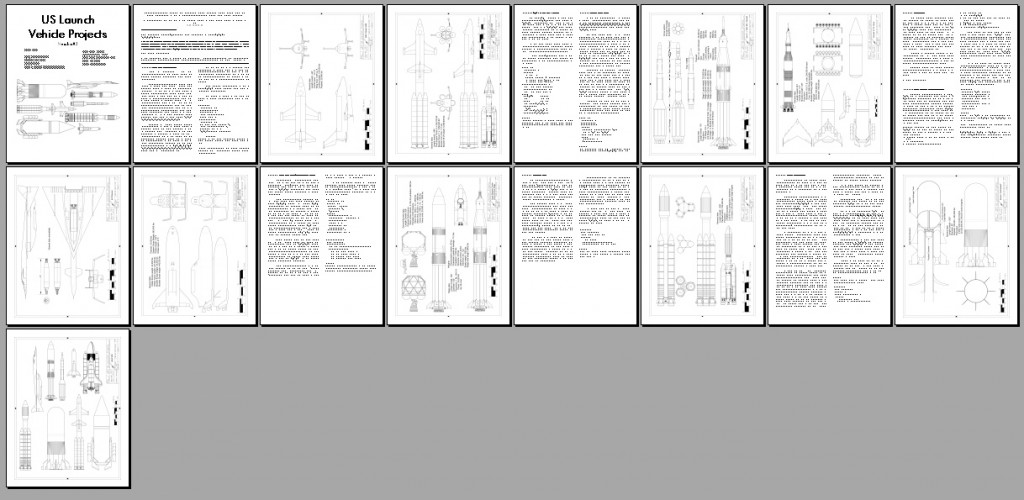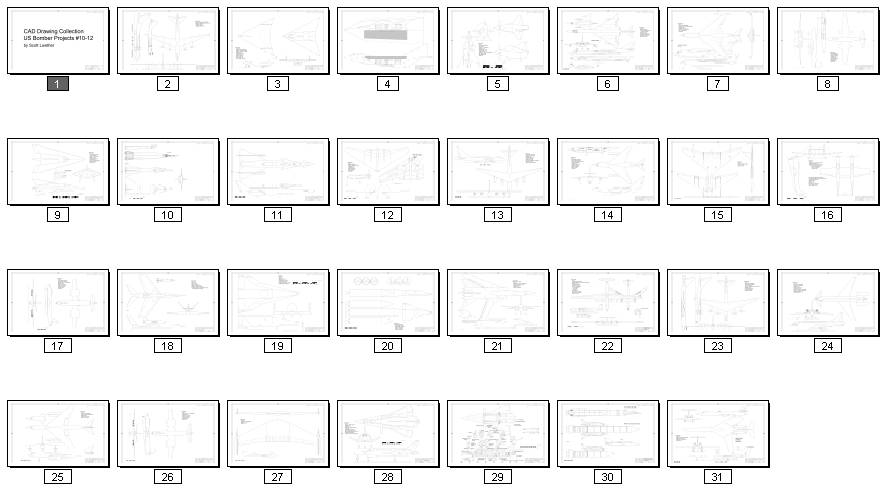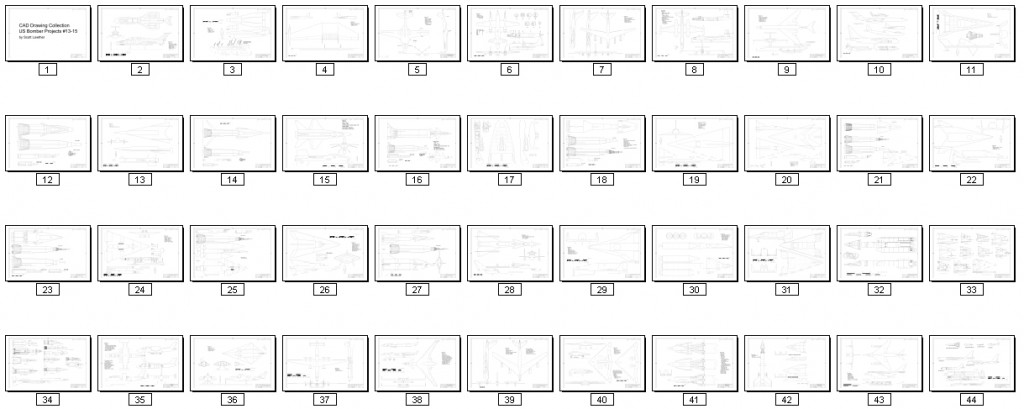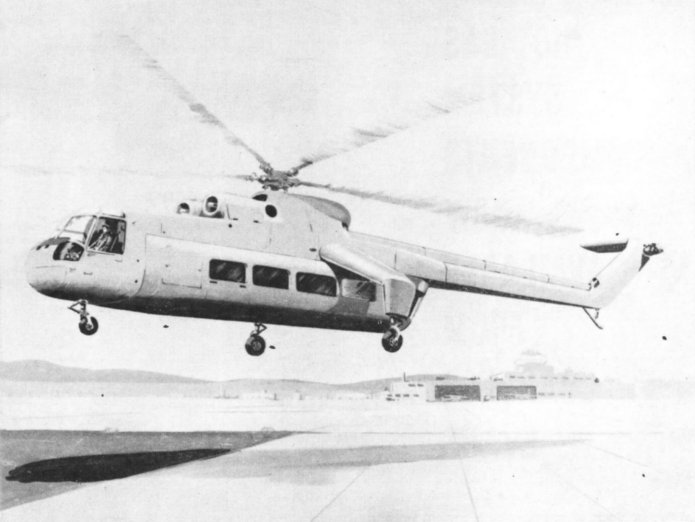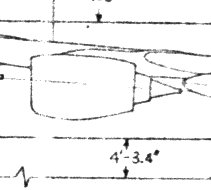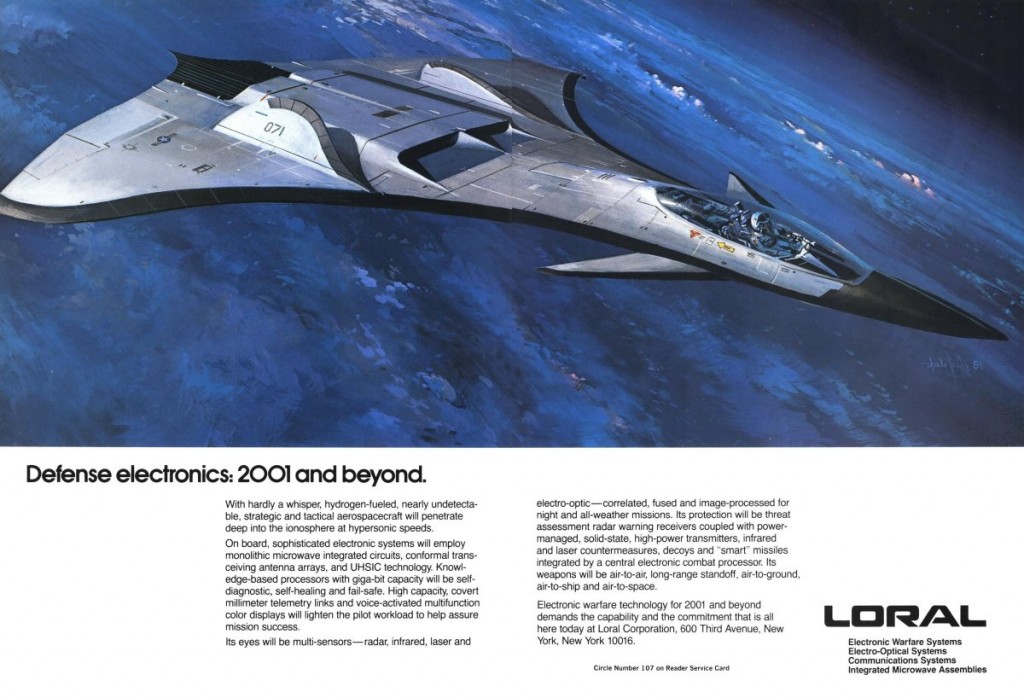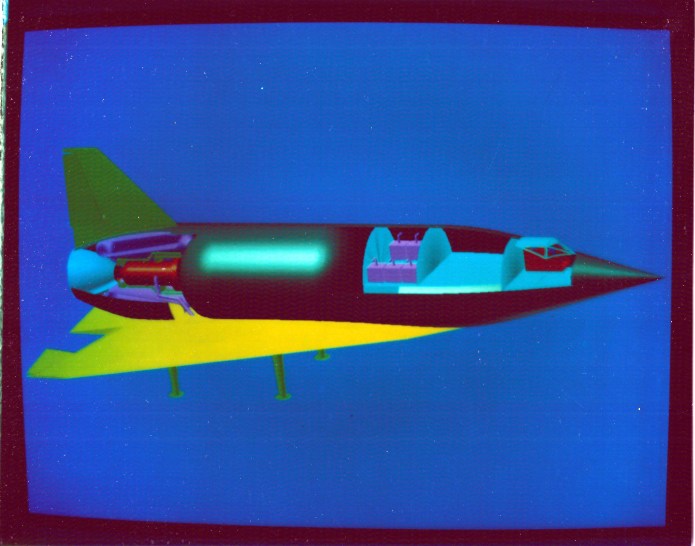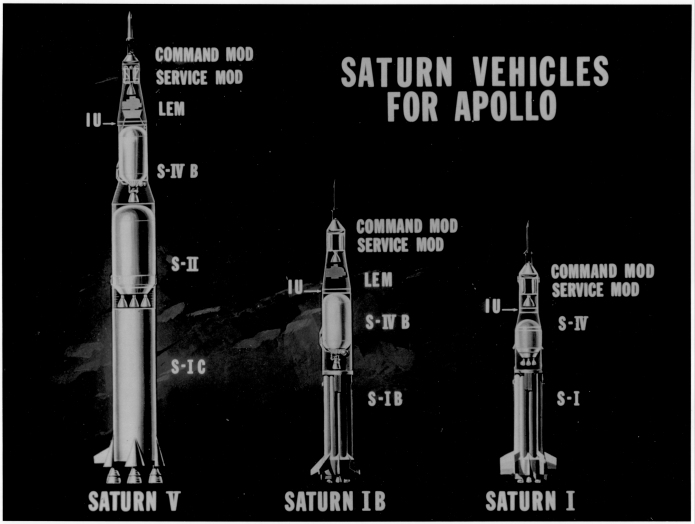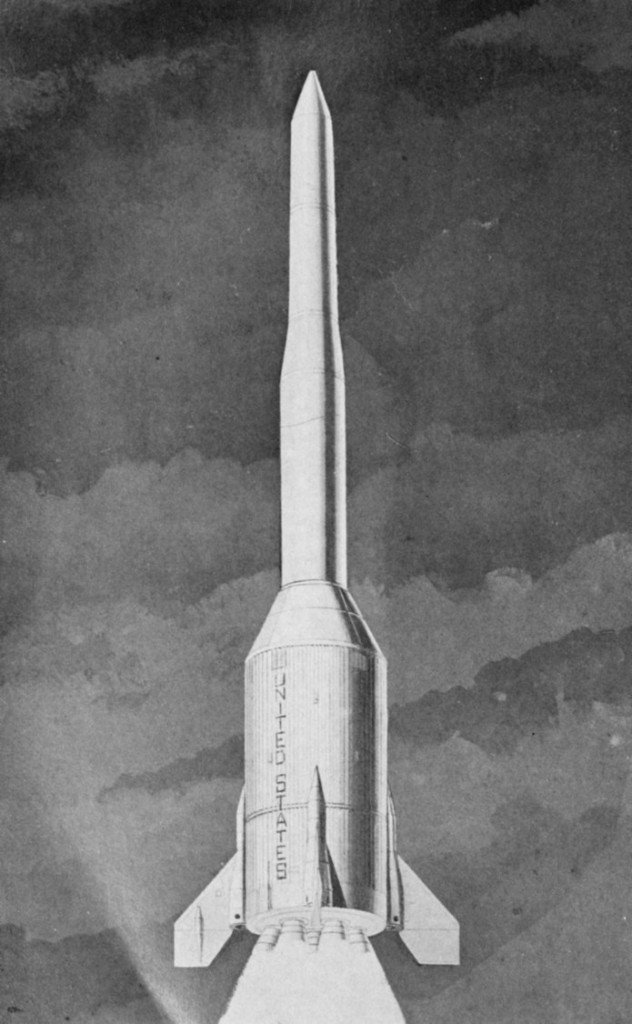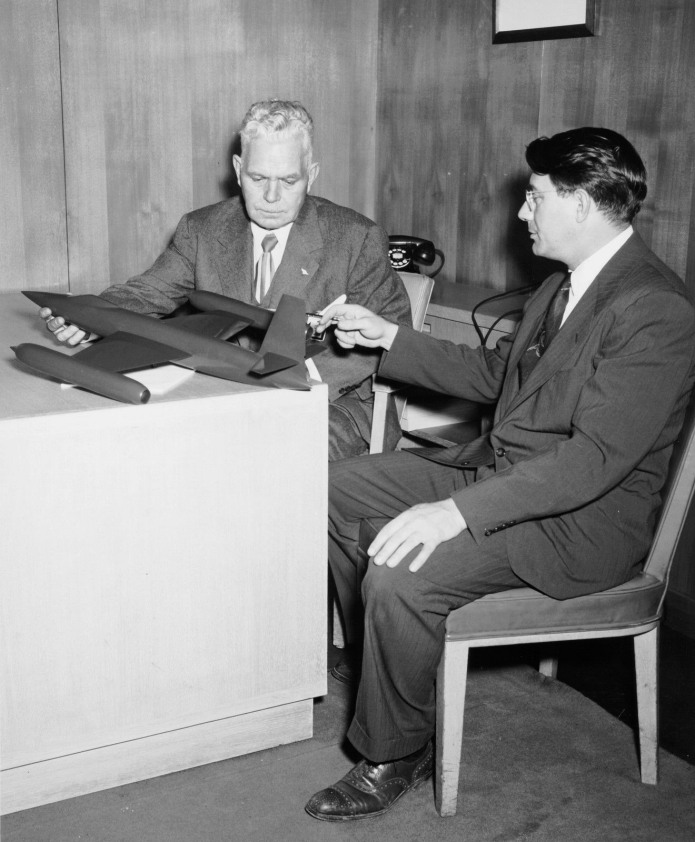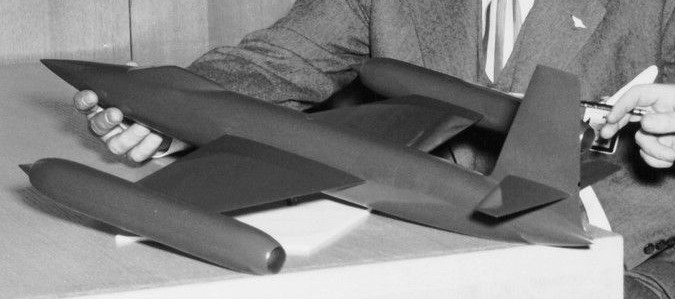USSP #04
US Spacecraft Projects #04, the Lander Special is now available (see HERE for the entire series). Issue #04 includes:
- GE Electrically Propelled Cargo Vehicle: A lunar lander with a nuclear reactor and ion engines to reduce the cost of lunar logistics
- Douglas LASS: Landing an S-IVb stage on the moon
- Convair PLAME: VTOL crew return with jet engines
- North American Mars Excursion Module: the iconic conical Mars lander
- Martin-Marietta Ballistic NIMF: A nuclear “hopper”
- Early LEM: One of the first recognizable designs, by Maxime Faget
- ROMBUS: probably the largest lunar lander seriously proposed
- Boeing Lander Module 2: A recent Mars crew lander
USSP #04 can be downloaded as a PDF file for only $5.25:
——–
—–
USTP #05
US Transport Projects #05 is now available (see HERE for the entire series). Issue #05 includes:
- Boeing Model 820-100: The B-52 can haul more than bombs…
- Lockheed Nuclear Tug: Want to tow two C-5s across an ocean?
- Martin Super Ocean Transport: A WWII-era design for a post-war giant passenger transport
- HOT EAGLE: 13 Marines to Benghazi in minutes
- Sikorsky SST: An early supersonic transport concept
- Lifting Body Cargo Airplane: A wartime design for a multibody design with a separate cargo module
- Resource Air Carrier: A giant “flying pipeline” to haul petroleum
- Boeing Model 763-165: A side-by-side New Large Airplane design
USTP #05 can be downloaded as a PDF file for only $4.25:
——–
—–
AND don’t forget these…
—
USLP 03
Issue 03 of US Launch Vehicle Projects includes:
- Juno V/Titan/Nomad: A 1958 concept for a space launcher using an ICBM for upper stages
- Convair ATE Nova: A 1963 idea for winged airbreathing boosters
- B-70/Gemini: Using a bomber as a booster
- Phase II VTOHL Orbit-On-Demand: a 1985 concept for a relatively small two stage to orbit spaceplane
- NASA Lewis Saturn Ib/Centaur/Kick Stage: a high energy upper stage
- NASA MSC 042B/Titan IIIL6: a straight-winged orbiter atop a large Titan derivative
- Heavy Lift Titan: A large diameter Titan core with three Shuttle boosters
- Escher “Unshackled”: An unconventional idea for a lunar rocket
USLP #03 can be downloaded as a PDF file for only $4.25:
——–
—–
Large format USBP drawings, Issues 10-12
The CAD drawings created for USBP reformatted and rescaled for 11X17 collected in a separate volume. Drawings have in some cases been corrected, improved and added to.
USBP 11X17 10-12 collects the diagrams created for issues 10, 11 and 12, including:
Boeing Model 464-34-3, Republic mach 7, Lockheed CL-1301-1, Convair WS-125A, Boeing 484-415, Martin Model 223-10, Boeing Model 814-1010 Dyna Soar, Martin Model 192-5, Boeing Model 464-40, Boeing Model 701-218, Northrop Nuclear flying wing, North American D118, Martin Model 223-11, North American Model 705-00-04, Bell/Martin 464L, Boeing B-1, Boeing Big Bird BB 6800, Boeing Model464-41, Douglas MX-2091-E, Boeing Model 701-238, Martin Model 223-12, Northrop Nuclear Flying Wing, Rockwell MRCC, Lockheed CL-820-8
USBP11x17-10-12 can be downloaded as a PDF file for only $11:
————–
—-
Large format USBP drawings, Issues 13-15
The CAD drawings created for USBP reformatted and rescaled for 11X17 collected in a separate volume. Drawings have in some cases been corrected, improved and added to.
USBP 11X17 13-15 collects the diagrams created for issues 10, 11 and 12, including:
Ryan Model 162, Boeing Orbital bomb, Northrop Atomic Wing, Consolidated Vultee High Speed Flying Boat, Martin Model 189, Boeing Model 464-046, Curtis F-87C, Boeing Model 701-247, Lockheed WS 464L Dyna Soar, McDonnell WS 464L Dyna Soar, North American WS 464L Dyna Soar, Republic WS 464L Dyna Soar, Convair WS 464L Dyna Soar I, Convair WS 464L Dyna Soar II, Douglas WS 464L Dyna Soar, Northrop N206 WS 464L Dyna Soar, Boeing Model 814-1010 Dyna Soar II, Bell/Martin WS 464L Dyna Soar, Boeing Model 2050E Dyan Soar, Boeing Dyna Soar/ Titan IIIc, Bell D2001 TS-149, Lockheed Harvey; Convair Model 35, Rockwell D661-27, Boeing Model 464-49, Boeing Model 988-123, Boeing Manned Orbital Bomber, Boeing Model 701-251
USBP11x17-13-15 can be downloaded as a PDF file for only $11:
————–
—-
